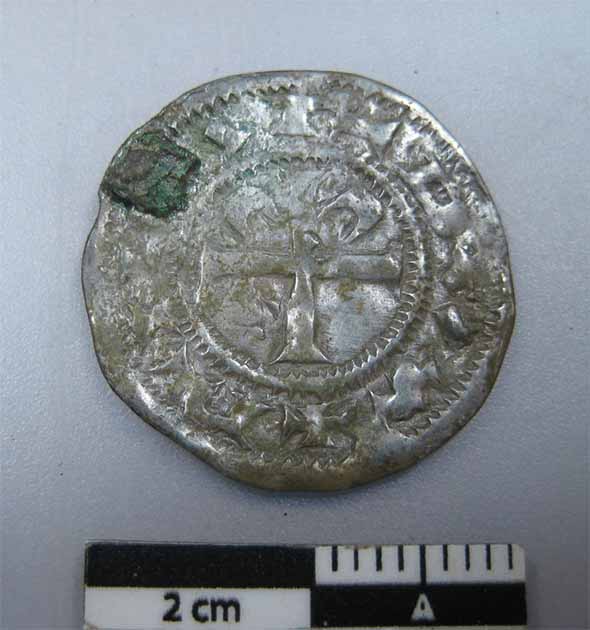Archaeologists in Sweden have unearthed a rare Viking treasure hoard. Found beneath what was a wooden floor, the collection of silver jewellery and coins tell a story of international trade almost one thousand years ago.
A collection of silver neck-torques, arm rings and coins are among the valuable Viking treasures recently recovered in Viggbyholm, Täby, outside Stockholm, the capital city of Sweden. Maria Lingström at The Archaeologists, National Historical Museums in Sweden, says the 1000-year-old silver hoard is something “you probably only experience once in a lifetime”.
The Treasures Kept Coming And Coming
The Viking Age lasted between 793 AD to 1066 AD, at which time Scandinavian Vikings undertook large-scale raiding and trading across Europe, Asia and North America. Now, what is being described as “a unique Viking Age treasure hoard” has been unearthed by a team of archaeologists working in Täby, Stockholm, containing eight silver torque-style neck rings, arm rings and coins.

A unique treasure hoard dating from the Viking Age has been uncovered in Täby, Stockholm. Consisting of arm rings, coins and eight torque-style neck rings. (The Archaeologists)
The Archaeologists press release says they excavated the foundations of 20 houses and buildings dating from around 400 AD, through the Viking Age and into the early Middle Ages. The treasure hoard was stashed beneath what was at one time a wooden floor. Maria Lingström says the researchers excavated the eight high-quality neck rings and that they “just kept coming and coming.” She added that each of the treasures is “extraordinarily well preserved” considering they were buried almost one thousand years ago.

Cleaning one of the torque-style neck rings. (Acta Konserveringscentrum)
Stashed In A Hurry During Times Of Worry
During the Viking Age, Vikings communicated with a runic alphabet, and thousands of ornate runestones were created and erected across Sweden. In fact, according to VisitStockholm, of the 7500+ recorded rune stones identified in Scandinavia “over 2000 have been discovered in Sweden.” Furthermore, the biggest concentration of preserved runestones in the world can be found in woods surrounding Runriket, Täby, outside Stockholm, where the treasure was recently discovered.
A collection of coins, two arm rings, one finger ring, two pearls and 12 coin pendants was found in a linen pouch that had been stashed in a small ceramic pot. Exactly why the inhabitants decided to hide what must have been their most valuable objects beneath a wooden floor is yet unclear. However, evidence suggests this hoard was buried in a hurry when the village or household came under threat, and that the owners never returned to recover their treasure.

Archaeologist Maria Lingström excavating a house. (The Archaeologists)
For Answers, Always Follow The Money Trail
The archaeologists say other Viking objects such as “arrows, quernstones, and beautiful amulet rings” had previously been discovered in this area, however, this hoard represents the first recovered gold and silver. Some of the coins were minted in Bohemia, Bavaria, England and France, and of particular interest is a 10th century coin minted in the French city of Rouen, in Normandy.
Described as “extremely rare,” according to Professor Jens Christian Moesgaard at Stockholm University, previously, this type of coin was only known from drawings in an 18th century book.

Coin from Normandy (Acta Konserveringscentrum AB / Arkeologerna)
The collection also contained five Arabic silver ‘dirhams,’ which during the Viking Age were minted in Muslim provinces in Central Asia such as Samarkand and Tashkent. Dirhams were minted and used on a large scale by Muslim merchants along the Volga and Don rivers and they came to Scandinavia from what are today Russian territories.
A “Far-Reaching And Blossoming Trade
Jens Christian Moesgaard said that around a thousand years ago the trade in silver was “controlled by a relatively small group of Vikings.” Then, towards the end of the 900s the usage of silver Arab coins was greatly replaced by western European coins which have been discovered across Denmark. Archaeologist John Hamilton said these coins represent “a perfect example of the far-reaching connections and blossoming trade, which flourished in Viking Age Scandinavia.”
It is known that by 1000 AD the Vikings were trading all over Europe, as far east as Central Asia and in North America. Gold, silver, fur, silk, wine, spices, exotic jewellery, pottery and glassware were all on the Viking merchant’s inventory of luxury imports. However, the discovery of “Hacksilver” fragments, cut and bent silver, at many Viking trading centres suggests silver was used by Vikings as a form of currency, where its weight served as a trading standard.